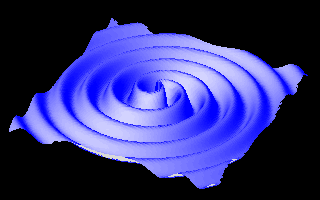The waveform in question is IMRPhenomP, where I is inspiral (Orbits of BBH shrinking), M is merger (Merging of the two BBH) and R is ringdown (Non-symmetric, mass is spinning about center of mass). These inspiral portions of the gravitational wave signal are well modeled, however the problem lies within the merger and ringdown. Although there is an archive of these merger-ringdown models (IMRPhenom family of waveforms), IMRPhenomP is chosen as it includes the spin and orbital precession effects which are crucial in these gravitational waveforms.
IMRPhenomP has a region where the waveform becomes invalid, where mass ratio (q) = 4:1 (0.25). Primarily, we want to test range of sources that can be recovered from IMRPhenomP without approaching this 4:1 region. Testing these simulated GWs at different q values of [1.0, 0.9, 0.7, 0.5] and post processing produces posterior distribution functions of the mass ratio to see the how often q approaches the 4:1 boundary.
In order to begin the parameter estimation for the BBH, understanding the algorithm that preforms this task is important. This algorithm is known as Markov Chain Monte Carlo (MCMC) simulation. MCMC in this case is used in numerical estimations for multi-dimensional values (15). Being able to accomplish these feats requires the use of Bayes Theorem along with the Metropolis-Hastings algorithm.
- 100 runs in total per injection file: [0,99]
- Mass ratios are held constant within their respective runs, however the masses are not. Meaning for 0.5, the masses would be 2/4, 4/8, 8/16 and any variation that gives a 0.5 mass ratio value.
- Stellar BBH waveform is used, meaning that mass ranges from [5,100].
Feel free to shoot me an email if you have any questions! Cbustos(at)neiu.edu or Cbustos93(at)yahoo.com ~Cesar
